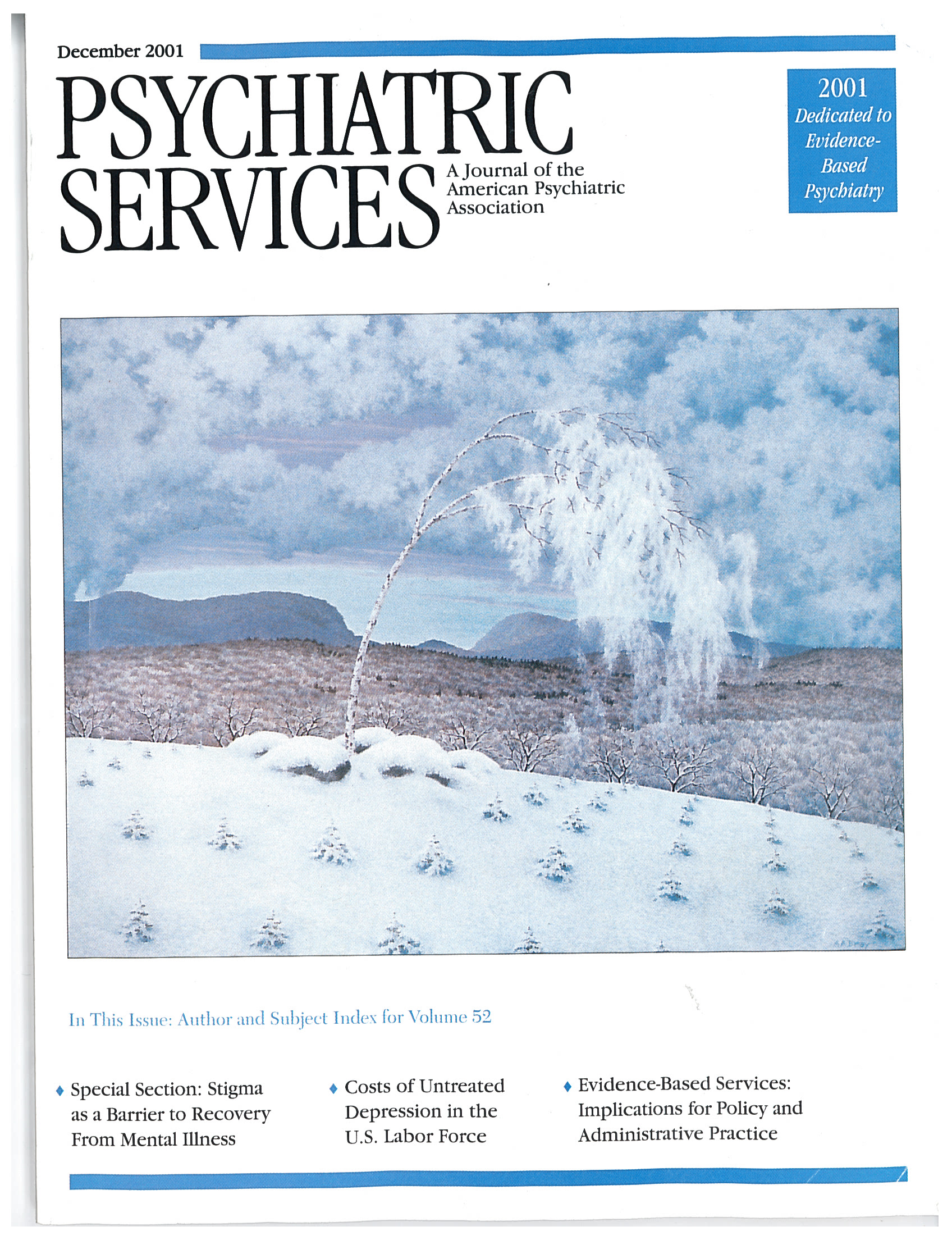Telepsychiatry in a Rural Inpatient Setting
To the Editor: The treatment of psychiatric patients in rural areas has benefited from the improvement of telepsychiatric services (1,2). Many factors make psychiatry and telemedicine a successful marriage, including the ability to assess mental status, symptoms, and most side effects effectively by listening to, talking to, and observing the patient (3,4).
Although telepsychiatry is becoming more established and accepted in the treatment community (5), it has generally been used with patients who are stable and relatively asymptomatic. Telepsychiatry could bring additional benefits to treatment if it could be used more widely to provide services to those who are unstable or in distress. Patients who are experiencing an exacerbation of symptoms or changes in their mental status could use this technology to communicate with their physician to discuss treatment options or changes in their medication regimen. Because few studies have included mentally ill patients with active and severe symptoms, we wanted to investigate attitudes toward telepsychiatry in a group of patients served in a rural acute care psychiatric facility.
A total of 35 patients—16 women and 19 men—who were involuntarily committed were seen by their treating physician over Mountaineer Doctor Television (MDTV), a telemedicine service provided jointly by the West Virginia University School of Medicine and the state of West Virginia. The patients were usually seen face-to-face by their physician. Immediately after the telecommunication session, they were asked their opinions of the experience in a series of questions.
Twenty-seven patients (77 percent) felt that the physician understood them as well as or better than usual through MDTV. Twenty-two (63 percent) felt that the MDTV system was the same as or better than having their physician in the room. Only five (14 percent) stated that they would be generally unwilling to use the MDTV system again.
An interesting finding was that patients who had mania or hypomania were significantly more likely than those who had psychotic or depressive disorders to report a positive experience with MDTV. Wilcoxon Mann- Whitney exact tests revealed that patients who had mania were more likely to feel that their physician understood their needs better using MDTV (S=201; z=2.37; p=.014). The patients with mania were also more likely to state that the MDTV experience was better than having a physician in the room, but this difference was not significant.
These initial findings in an acutely ill psychiatric population are encouraging for two reasons. First, the findings indicate that inpatients are willing to use the technology with their treatment providers. Its use allows treatment providers to be in contact with patients even when the providers are required to be away from the hospital. Thus providers can serve in a number of different settings more effectively. Second, the findings have many implications for monitoring patients in an outpatient setting and for use in emergency care. The results suggest that patients may be willing to use this technology when they are entering an active phase of their illness and when their symptoms are worsening. Given these findings, we recommend that rural clinics take greater advantage of telepsychiatry with patients who have acute symptoms and that they explore ways of using this technology for early detection of psychiatric distress.
When this work was done the authors were affiliated with the West Virginia University School of Medicine and William R. Sharpe, Jr., Hospital in Weston, West Virginia. Dr. Pollard is currently in private practice in Cody, Wyoming. Dr. LePage is with the Veterans Affairs North Texas health care System in Dallas.
1. Mielonen ML, Ohinmaa A, Moring J, et al: Psychiatric inpatient care planning via telemedicine. Journal of Telemedicine and Telecare 6:152-157, 2000Crossref, Medline, Google Scholar
2. Frueh BC, Deitsch SE, Santos AB, et al: Procedural and methodological issues in telepsychiatry research and program development. Psychiatric Services 51:1522-1527, 2000Link, Google Scholar
3. Ruskin PE, Reed S, Kumar R, et al: Reliability and acceptability of psychiatric diagnosis via telecommunication and audiovisual technology. Psychiatric Services 49:1086-1088, 1998Link, Google Scholar
4. Kirkwood KT, Peck DF, Bennie L: The consistency of neuropsychological assessments performed via telecommunication and face to face. Journal of Telemedicine and Telecare 6:147-151, 2000Crossref, Medline, Google Scholar
5. Elford R, White H, Bowering R, et al: A randomized, controlled trial of child psychiatric assessments conducted using videoconferencing. Journal of Telemedicine and Telecare 6:73-82, 2000Crossref, Medline, Google Scholar



